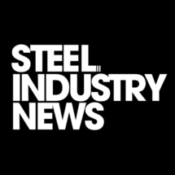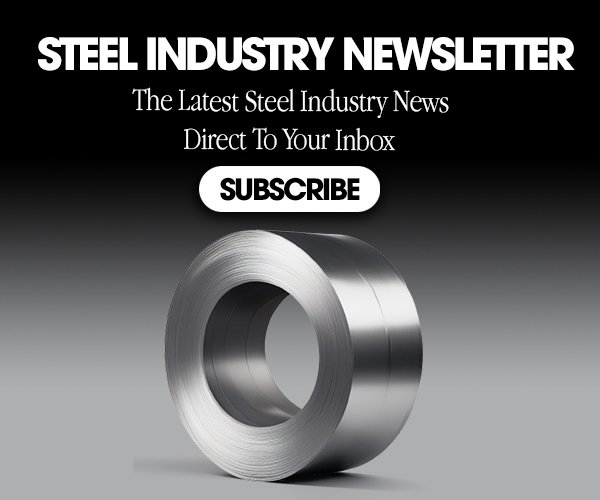ArcelorMittal’s recent announcement regarding its planned investment in a new electrical steel Non-Grain-Oriented Electrical Steel (NOES) production facility in Calvert, Alabama, signifies a significant development within the American steel industry. This article delves into the details of this project, exploring its potential impact on the U.S. electrical steel market.
ArcelorMittal’s Calvert Project: A Boost for Domestic Production
ArcelorMittal’s Calvert project aims to establish a state-of-the-art facility dedicated to the production of 150,000 metric tons of NOES annually. This initiative is supported by the U.S. Department of Energy (DOE) and the Internal Revenue Service (IRS) through the 48C investment tax credit program, which awarded ArcelorMittal $280.5 million in investment tax credits acknowledging the critical role of NOES in clean energy technologies.
Additional Project Highlights:
The planned facility will encompass:
- Annealing pickling line
- Cold-rolling mill
- Annealing coating line
- Packaging and slitter line
- Ancillary equipment
This project has the potential to create:
- Up to 260 permanent jobs
- 1300 construction jobs
The Significance of ArcelorMittal’s Investment
ArcelorMittal’s Calvert project holds substantial significance for several reasons:
- Market Leadership: This investment strengthens ArcelorMittal’s position as a leading supplier of electrical steel in the U.S., potentially influencing market dynamics.
- Reduced Import Reliance: The project aims to decrease U.S. dependence on imported NOES, enhancing national security and supply chain resilience.
- Technological Advancement: ArcelorMittal’s focus on high-end NOES production positions the company as a technology leader, catering to the needs of domestic electric vehicle manufacturers.
The U.S. Electrical Steel Landscape
Here’s a brief overview of the U.S. electrical steel market:
- Production: Approximately 1.5 million tons annually.
- Imports: Around 1 million tons annually.
- Market Value: Estimated at $4.6 billion in 2023, with a projected CAGR of 8.4% to reach $7.2 billion by 2028.
- Demand Drivers: Power generation, automotive (especially EVs), and household appliances sectors.
- Key Players: ArcelorMittal, Cleveland-Cliffs Corporation, Nippon Steel Corporation, Tata Steel, POSCO, and ThyssenKrupp AG.
It also should be noted that U.S. Steel is launching a new non-grain oriented (NGO) electrical steel line at its Big River Steel facility in Osceola, Arkansas. This new line will produce up to 200,000 tons per year of U.S. Steel’s new electrical steel product called InduX.
In addition, ArcelorMittal operates an electrical steel production site at its Mardyck facility in northern France. The company is currently undertaking preparatory works to start new electrical steel production lines at this site, which are scheduled to begin production in 2024.This new 200,000 ton capacity at Mardyck will bring ArcelorMittal’s total electrical steel production in France to 300,000 tons per year.
Delving Deeper: Electrical Steel, Processing, and Applications
Electrical steel, also known as silicon steel or transformer steel, plays a vital role in the efficient operation of numerous electrical devices and systems. Understanding its properties, processing methods, and applications provides valuable insight into this critical material.
What is Electrical Steel?
Electrical steel is a specialized steel alloy primarily composed of iron and silicon, typically containing 1-6.5% silicon. This addition of silicon significantly alters the material’s magnetic properties, making it ideal for applications requiring high permeability and low energy losses in alternating current (AC) magnetic fields.
Why is Electrical Steel Important?
NOES plays a crucial role in the performance and efficiency of electric motors, a vital component in:
- Battery electric vehicles (BEVs)
- Plug-in hybrid electric vehicles (PHEVs)
- Hybrid vehicles
The current domestic capacity of high-end NOES in the U.S. falls short of what is required to meet the anticipated growth in the electric vehicle market. This poses a challenge in achieving the national goal of net-zero greenhouse gas emissions by 2050. ArcelorMittal’s project, therefore, addresses a critical need by:
- Reducing U.S. reliance on imported NOES
- Expanding domestic supply to satisfy growing demand
Applications of Electrical Steel:
Electrical steel finds application in a wide range of electrical devices and systems:
- Transformers: The core component of transformers, responsible for efficiently transferring electrical energy between different voltage levels.
- Electric Motors: The core material in electric motors, converting electrical energy into mechanical rotation.
- Generators: Essential for generating electrical power through the conversion of mechanical energy.
- Appliances: Used in various household appliances like motors in refrigerators, washing machines, and compressors.
- Electrical steel is a critical material for the manufacturing of transformers, motors, and generators used in the power grid and industrial applications. As the U.S. continues to invest in upgrading and expanding its electrical infrastructure, the demand for electrical steel is likely to grow.
- The increasing adoption of electric vehicles is also expected to drive higher demand for electrical steel, as it is a key component in the motors and transformers used in EVs.
- Overall, industry analysts project that the global demand for electrical steel will continue to rise in the coming years, driven by factors like grid modernization, growth in renewable energy, and the electrification of transportation.
Key Properties of Electrical Steel:
- High Permeability: Electrical steel allows magnetic flux to pass through it easily, crucial for efficient energy transfer in transformers, motors, and generators.
- Low Core Losses: Minimizing energy dissipation as heat within the core is essential, and electrical steel exhibits low hysteresis and eddy current losses.
- Grain Structure: The crystallographic structure of the steel significantly impacts its magnetic properties. Grain-oriented electrical steel (GOES) undergoes specific processing to align the grains in a preferred direction, further enhancing its performance.
Processing of Electrical Steel:
The production of electrical steel involves several key steps:
- Melting and Refining: Raw materials like iron ore and silicon are melted and refined to achieve the desired chemical composition.
- Casting: The molten steel is cast into slabs or ingots.
- Hot Rolling: The slabs are hot-rolled into coils.
- Cold Rolling: The coils are further reduced in thickness through cold rolling, often with intermediate annealing steps to control the microstructure.
- Decarburization (for GOES): In the case of GOES, a decarburization process removes excess carbon, further optimizing its magnetic properties.
- Grain Orientation (for GOES): GOES undergoes specific thermo-magnetic treatments to align the grain structure in a preferred direction.
- Annealing: Final heat treatment optimizes the material’s magnetic properties and relieves any residual stresses.
- Coating: A thin insulating layer is often applied to minimize eddy current losses within the core.
- Slitting: The processed steel coils are then slit into narrow strips or laminations of desired widths for specific applications.
Slitting Electrical Steels:
The key reasons for slitting electrical steels are:
- Reducing eddy current losses: Cutting the steel into thin strips helps minimize the formation of eddy currents, which can cause energy losses in the core of electrical equipment. Thinner laminations reduce the path length for induced currents.
- Improving magnetic properties: The slitting process helps to align the grain structure of the steel, improving its magnetic permeability and reducing core losses.
- Enabling efficient stacking: Narrower strips can be more efficiently stacked and assembled into the core of transformers, motors, and generators, optimizing the use of space.
- Facilitating handling and transportation: Slitting the large steel coils into narrower coils makes the material easier to handle, transport, and install in electrical equipment.
Several methods are employed for slitting electrical steel coils into narrower strips:
Mechanical Slitting
- Mechanical slitting involves using a series of rotating blades or shears to cut the steel sheet into narrower strips.
- This is the most widely used slitting method for electrical steels due to its simplicity, speed, and cost-effectiveness.
- Mechanical slitters can achieve tight tolerances and produce clean, burr-free edges on the slit strips.
Laser Slitting
- Laser slitting uses a high-energy laser beam to precisely cut the steel sheet along the desired width.
- Laser slitting can produce very narrow strips with extremely tight dimensional tolerances and minimal edge deformation.
- This method is particularly useful for cutting thinner gauge electrical steels or producing specialty products.
Waterjet Slitting
- Waterjet slitting uses a high-pressure stream of water, sometimes mixed with an abrasive, to cut the steel sheet.
- Waterjet slitting can handle thicker gauge electrical steels and produces clean, burr-free edges without heat-affected zones.
- This method is more expensive than mechanical slitting but can be advantageous for certain applications.
Plasma Slitting
- Plasma slitting uses a high-temperature plasma arc to melt and cut the steel sheet.
- Plasma slitting can handle thicker electrical steel sheets and produces a narrow kerf (cut width) with minimal edge distortion.
- This method is less common than mechanical or laser slitting for electrical steels.
The selection of the slitting method depends on factors like steel thickness, desired strip width, edge quality requirements, production volume, and cost considerations.
Conclusion
Electrical steel is a critical material for the efficient operation of transformers, motors, generators, and various electrical devices. Its unique magnetic properties arise from the addition of silicon and are further enhanced through specific processing techniques like grain orientation. ArcelorMittal’s Calvert project presents a major step forward in bolstering domestic production of electrical steel, a critical material for clean energy technologies and the electrification of transportation. This investment not only positions ArcelorMittal as a leader in this market but also contributes to reducing U.S. reliance on foreign imports and supporting the nation’s clean energy goals. As the demand for electrical steel is anticipated to rise in the coming years, ArcelorMittal’s initiative has the potential to significantly impact the landscape of the U.S. electrical steel market.
Check out some of our other articles on the latest Steel Industry News:
“I Would Rather Own a Market Than a Mill”: A Look at Modern Steel Industry Dynamics
Automakers Challenge Potential Cleveland-Cliffs-U.S. Steel Merger
Nucor Posts First Consumer Spot Price for Hot-Rolled Coil
Nucor Announces Consumer Spot Price (CSP) for Hot Roll
Cleveland-Cliffs: Announces Second Price Increase
ArcelorMittal, Nucor, and Cleveland-Cliffs Announce Price Increases










